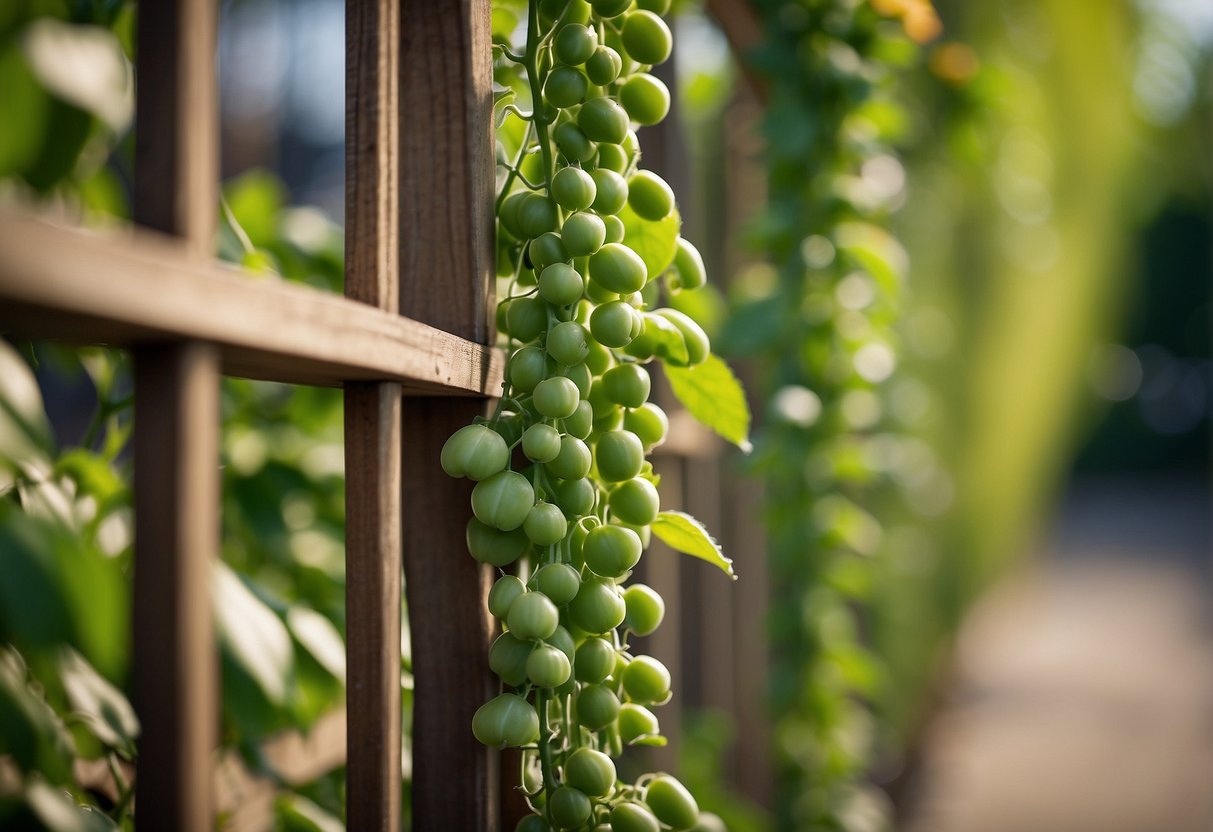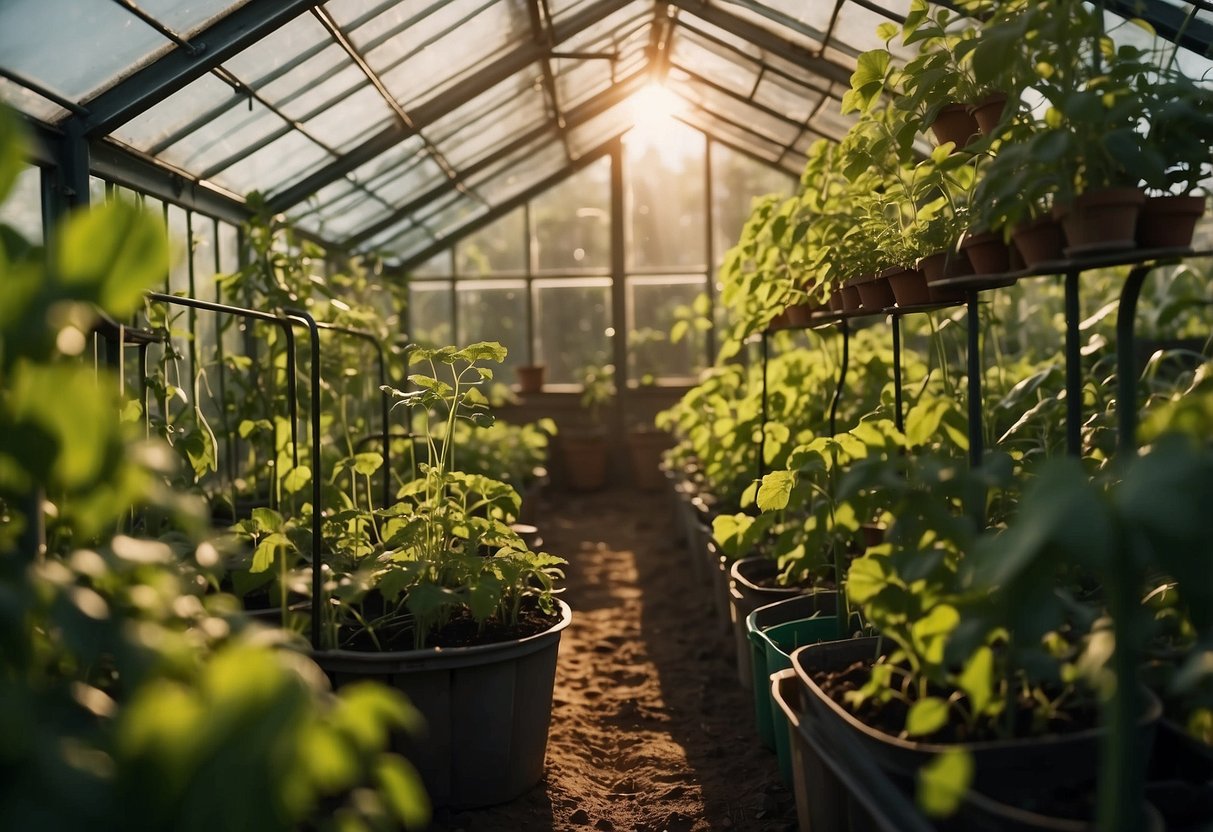Pea Garden Ideas: Creative Tips for Your Backyard Oasis
Growing peas in your garden can be a delightful and rewarding experience. With various ways to support and cultivate these plants, you can create a thriving garden space that produces healthy and delicious peas. Exploring different pea garden ideas can help you find the perfect setup that fits your needs and resources.

From DIY trellis structures to planting techniques, there are many creative and practical ways to grow peas. Whether you’re a beginner or a seasoned gardener, you’ll find valuable tips and inspiration to make the most out of your pea garden.
1) Vertical Trellises for Peas

Vertical trellises are a great way to support your pea plants. They’re easy to build and help save space in your garden. You can use bamboo stakes and garden twine to create a simple and effective structure.
Another option is to use wood and jute rope for a rustic trellis. These materials are easy to find and work well for supporting pea vines. Whether you choose bamboo or wood, your peas will have plenty of support to grow tall and healthy.
2) Raised Bed Pea Garden

Raised beds filled with pea gravel are great for your garden. They provide good drainage and help prevent weeds.
You can build your own raised bed using wood or stone. Fill the bed with pea gravel and plant your favorite flowers or vegetables.
This design is both beautiful and easy to maintain in any space.
3) Pea teepees with bamboo sticks

Pea teepees made from bamboo sticks are a wonderful option for your garden. You only need a few bamboo stakes and some twine.
First, bundle three to five bamboo stakes together at one end. Spread the loose ends apart to form a teepee shape. Tie the top securely with twine.
Place the teepee in your garden where you’d like your peas to grow. The plants will climb up the bamboo sticks, creating a pretty and functional support system.
For more information, you can explore DIY pea trellis ideas.
4) Pea and Herb Companion Planting

Peas grow well with many herbs. Consider planting dill alongside your peas. Dill attracts predatory insects that help keep harmful pests away.
Another great herb is mint. Its strong smell can deter aphids and other pests.
Basil is another good choice. It repels flies and mosquitoes and can enhance the flavor of nearby vegetables, including peas.
Parsley is also beneficial. It helps improve soil health and attracts beneficial insects like ladybugs.
5) DIY Pea Garden Greenhouse

A DIY pea garden greenhouse is perfect if you want to grow peas in colder weather.
You can use PVC pipes and clear plastic sheeting to create a small greenhouse. This setup helps maintain warmth and protect your peas from frost.
Another option is to repurpose an old window frame and attach plastic or glass to it. This method adds charm and functionality to your garden.
6) Pea Shoot Microgreens Setup

Growing pea shoot microgreens is a fun and simple way to enjoy fresh greens. Start by soaking the pea seeds in water. This helps them germinate faster and better.
Next, prepare your growing tray by filling it with soil. Spread the soaked seeds evenly across the soil surface. Cover them lightly with more soil or simply press them down.
Place the tray under a grow light, keeping it close to the soil surface. Water the seeds with a spray bottle to keep them moist.
For more details, check out this guide on pea microgreens.
7) Pea garden in small containers

You can grow peas in small containers, even if you have limited space. Choose a container that is at least 12 inches deep to provide enough room for the roots.
Use a bamboo trellis and twine to support your pea plants. This simple setup helps the vines climb, making the best use of vertical space.
Place your container in a sunny spot. Peas need plenty of sunlight to thrive. Keep the soil moist but not waterlogged; peas prefer well-drained soil.
8) Earth-friendly pea mulch

Pea gravel isn’t just for pathways or fire pits; it’s also an excellent earth-friendly mulch. Using pea gravel as mulch helps to control weeds, retain moisture, and enhance your garden’s appearance.
You can place pea gravel around trees or flower beds. It reduces the need for frequent watering. You’ll also appreciate how it prevents soil erosion.
In addition to being practical, pea gravel is a stylish option that complements various plants and garden styles. Its natural look blends well with many landscapes.
9) Creative Pea Labeling Sticks

Using creative pea labeling sticks can add a fun touch to your garden. You can make these labels from recycled materials like wooden spoons or sticks.
Draw or paint little pea pods on them to make them unique.
Consider using sticks and twigs from your garden to create natural labels. It’s a simple way to keep your garden organized and looking great!
10) Pea flowers for pollinators

Pea flowers are a delightful addition to your garden that attract beneficial insects. The sweet scent and colorful blooms are hard for pollinators to resist.
Bees and butterflies are especially drawn to the blossoms of pea plants. This makes your garden not only pretty but also buzzing with life.
Grow pea flowers near other pollinator-friendly plants like lavender or black-eyed Susan to create a vibrant, interconnected garden. This helps maintain a healthy ecosystem in your backyard.
Preparing Your Garden for Peas

Successful pea planting starts with the right location and properly prepared soil. Ensuring these conditions can lead to a more fruitful and easier-to-manage garden.
Choosing the Right Location
Peas thrive in full sun and well-drained soil. Pick a spot in your garden that gets at least six to eight hours of sunlight daily. Avoid shaded areas as peas need sunlight to grow well.
Spacing is also crucial. Ensure there’s enough space for pea plants to spread and grow upwards. This will help in managing the plants as they grow tall and require support. A space close to a fence or where you can set up a trellis is ideal.
Lastly, avoid areas prone to waterlogging. Standing water can rot the roots, and peas are particularly sensitive to overly wet conditions. You can consider raised beds if your garden has poor drainage.
Soil Preparation Tips
Begin by testing the soil pH, which should be between 6.0 and 7.5 for best results. You can use a simple pH test kit from a garden store. Adjusting the pH may be necessary with lime for acidic soil or sulfur for alkaline soil.
Work the soil to a depth of about 12 inches, ensuring it is loose and not compacted. This helps the pea roots to grow deeper and stronger. Incorporate plenty of organic matter like compost or well-rotted manure to enrich the soil with nutrients. Avoid fresh manure as it can burn the tender roots of pea seedlings.
Finally, add a balanced fertilizer before planting. Peas generally don’t require high nitrogen fertilizers because they fix their own nitrogen from the atmosphere. Instead, look for a fertilizer rich in phosphorus and potassium to support root and fruit development.
Planting and Growing Peas

Planting and growing peas can be rewarding, especially when you know the best times to plant and how to support their growth. Here’s what you need to know to get started.
Ideal Planting Times
Peas thrive in cool weather, so it’s important to plant them early. In spring, you should sow pea seeds as soon as the soil can be worked. This usually means around 4 to 6 weeks before the last expected frost date in your area.
For a fall harvest, plant peas about two months before the first expected frost. Early maturing varieties are best for fall planting because they can grow quickly in the cooler weather.
Pea seeds need to be planted about 1 inch deep and 2 inches apart. Water them well after planting. There’s no need to thin them later. To help seeds sprout, some gardeners soak them in water for 12-24 hours before planting.
Support Structures for Peas
Peas are climbers, so support structures are crucial for healthy growth. You can use garden arches or tunnels made from cattle panels to support the vines. These are ideal for climbing peas and other vining plants.
Another popular method is to install simple trellises. Using bamboo stakes or wooden poles tied with string can also work well. Place these supports into the ground right after planting to avoid disturbing the roots later.
If you prefer something more decorative, consider a pea teepee made from several poles tied together at the top. This not only supports the plants but also adds a visual element to your garden. Proper support helps ensure that pea plants grow vertically, keeping the pods off the ground and promoting better air circulation.
Common Issues and Solutions

Pea plants can face several issues like pests and diseases. Understanding how to tackle these problems ensures a healthy and productive garden.
Pest Control Strategies
Pests like aphids and pea weevils often trouble pea plants. In the northern regions, aphids are more common. To control them, you can use insecticidal soap or neem oil. Another method is introducing ladybugs, which naturally prey on aphids.
Pea weevils can be a problem too. Handpick them off your plants when seen and destroy them. Applying a layer of diatomaceous earth around the base of your plants can also deter these pests.
In southern areas, cowpea curculios are a concern. Regularly inspect your plants for damage and use insecticides if needed. Fencing your garden can help keep larger pests out.
Dealing with Common Diseases
Pea plants can be affected by diseases such as blight, fusarium wilt, mosaic virus, and powdery mildew. For blight and fusarium wilt, remove and burn the infected plants to prevent spreading. Avoid planting peas in the same spot for a few years.
Powdery mildew appears as a white, powdery coating. You can spray the plants with diluted apple cider vinegar. Good air circulation also helps in preventing this disease.
Root rot can occur if your soil is too wet. Ensure your garden has good drainage and avoid overwatering. Regularly check the soil moisture and only water as needed to keep the soil slightly moist, not soaking wet.







